Mary Angela's Blog, page 2
August 18, 2020
Free Sticker with Preorder

First, a disclaimer: my new Happy Camper series has nothing to do with camping! Happy Camper is an eclectic gift shop that promotes a happy state of mind. Which is why I think these Happy Camper stickers from Life is Good are so neat. They can be used on laptops, water bottles, campers, or cars, and I’m giving them away to readers who preorder Open for Murder. Snap a picture of your receipt, and send it with your address to maryangelabooks@gmail.com. In return, I’ll send you the sticker. When the stickers are gone, I’ll revise this post to let you know.
U.S. only, please. Thank you!
Preorder at:
Amazon, Barnes & Noble, Apple, Kobo
The post Free Sticker with Preorder appeared first on Mary Angela.
January 29, 2020
Inspired by Place: The Heart of Happy Camper

Spearfish Canyon, SD
Finding beauty and inspiration can be hard in the bleak month of January. For a writer, however, inspiration is important. John Keats once said, “If poetry comes not as naturally as the leaves to a tree it had better not come at all.” I’m no poet, but I do believe there is truth in his words. Some days, the words come more naturally than others, but when I’m at a loss, I often look to nature for inspiration. It’s amazing the places it leads.
Two winters ago, I took a trip to Spearfish, SD, with my sister. It was a free trip for me, as she was traveling for work, and I was able to tag along. At the time, I’d been thinking about writing a new series. I had been to the Grand Canyon the previous summer and thought it would be neat to set a series in various national parks. Being familiar with cozies, however, I understood that most readers of this genre enjoy getting to know the town of their amateur sleuth. I certainly enjoy it, and my writing is very much place-based. I delve into descriptions and details of my sleuth’s surroundings. So moving each book to a new park wouldn’t work for me or my readers.

Spearfish Canyon Lodge, one of my favorite places to stay in the heart of the Black Hills
But the idea never left, and when I traveled to Spearfish Canyon many months later, I found my solution. Here was a beautiful canyon within the Black Hills National Forest, a place I’d spent much time as a child and adult. The Black Hills is the vacation destination for most South Dakota families, or at least it was for mine. We didn’t get on planes or trains or boats. We got in the car and traveled across the state via I-90 West. The Black Hills holds happy memories for me and lots of the visitors I’ve heard from since. It is the perfect setting for a cozy mystery.

Bridal Veil Falls
I’ve always been fascinated by a place within a place, or as Poe wrote, “a dream within a dream.” Like the college campus, Spirit Canyon—the fictional town of my new series—is its own mystery. It’s full of legends and lore, like the Black Hills itself. Zo Jones, my protagonist, is also a bit of an enigma. She doesn’t know her birth parents, which is a question she will answer over the course of the series. But she knows what she wants for herself and her eclectic gift shop, Happy Camper. The store is filled with all the novelties you might find on a vacation to South Dakota: pictures of bison, handcrafted pottery, colorful postcards, and feel-good wall art and memorabilia. I think you’re going to love it here. I know I do, even in January.

I love the way the sun rises over the canyon.
No matter the month, we can find inspiration. For me, that means taking a walk or a trip or looking at an idea from a different perspective. What does it mean for you? Share your tips! We could all use a few thoughts to get us through until spring.
The post Inspired by Place: The Heart of Happy Camper appeared first on Mary Angela.
November 23, 2019
Shakespeare: Literature’s Great Mystery
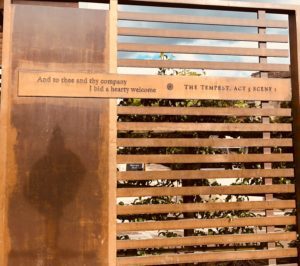
When I wrote Coming Up Murder, I knew I wanted to involve Shakespeare, so I created a Shakespeare Festival on campus. Shakespeare’s First Folio is on tour, and Copper Bluff is one of its lucky stops. Or not so lucky for one presenter. The presenter claims, in a room full of Shakespeare scholars, that Shakespeare is actually Edward de Vere, the Earl of Oxford. Although my graduate degree is in English, I’d never read that theory until I researched Coming Up Murder. Then I read all sorts of things. Oxfordians (yes, they have their own group) have many reasons for believing the Earl penned the plays.
 The Earl was an aristocrat and a praised poet, one whose work draws comparisons to Shakespeare’s. He might have invented and used the pen name Shakespeare (his nickname at court was “spear-shaker”) to distance himself from political criticism. Some researchers claim writing was an unsuitable occupation for aristocrats, which explains the pseudonym, but Oxford himself wrote works under his own name, as did Queen Elizabeth. So the claim itself is problematic. Still, he might have invoked the name to avoid scrutiny.
The Earl was an aristocrat and a praised poet, one whose work draws comparisons to Shakespeare’s. He might have invented and used the pen name Shakespeare (his nickname at court was “spear-shaker”) to distance himself from political criticism. Some researchers claim writing was an unsuitable occupation for aristocrats, which explains the pseudonym, but Oxford himself wrote works under his own name, as did Queen Elizabeth. So the claim itself is problematic. Still, he might have invoked the name to avoid scrutiny.
 Oxford knew well the themes in the plays. Titled men and women had a duty to uphold their titles, regardless of their own desires. Oxfordians insist an aristocrat, well versed in court life and power struggles, must have written the plays. They don’t believe a man with a grammar school education had the personal experience or legal knowledge to pull off such works as The Merchant of Venice. Oxford, on the other hand, studied law at Gray’s Inn. He also died in 1604, however, well before several of the plays were written. This is Shakespeareans’ strongest claim, and the one the victim disputes in Coming Up Murder.
Oxford knew well the themes in the plays. Titled men and women had a duty to uphold their titles, regardless of their own desires. Oxfordians insist an aristocrat, well versed in court life and power struggles, must have written the plays. They don’t believe a man with a grammar school education had the personal experience or legal knowledge to pull off such works as The Merchant of Venice. Oxford, on the other hand, studied law at Gray’s Inn. He also died in 1604, however, well before several of the plays were written. This is Shakespeareans’ strongest claim, and the one the victim disputes in Coming Up Murder.
But problems also arise when analyzing William Shakespeare’s death. His will doesn’t mention the plays—at all. It does give his second-best bed to his wife (lucky her!). Shakespearians claim the second-best bed in the house was a prized position, and his theater friends knew what to do with his work. There was no need to mention it in the will. However, Shakespeare leaves behind no plays or poems, and his handwriting is barely legible. The world would have to wait seven years after his death for the First Folio, printed in 1623.
 When I went to England last summer, I visited William Shakespeare’s house at Stratford upon Avon. Like all good amateur sleuths, I thought the truth would come to me by intuition. The house generates a large amount of revenue each year for the Shakespeare Birthplace Trust, though it’s been reported that some of the house dates to the 1800s, well after Shakespeare’s time. Oxfordians claim big business keeps the myth of Shakespeare going. Enjoying a scone inside Shakespeare’s grammar school while my daughters practiced writing with a quill, I felt the sentiment behind the controversy. But is it true?
When I went to England last summer, I visited William Shakespeare’s house at Stratford upon Avon. Like all good amateur sleuths, I thought the truth would come to me by intuition. The house generates a large amount of revenue each year for the Shakespeare Birthplace Trust, though it’s been reported that some of the house dates to the 1800s, well after Shakespeare’s time. Oxfordians claim big business keeps the myth of Shakespeare going. Enjoying a scone inside Shakespeare’s grammar school while my daughters practiced writing with a quill, I felt the sentiment behind the controversy. But is it true?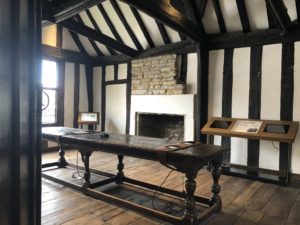
In my opinion, it’s one of literature’s great mysteries, and it all began with the question: what if? What if Shakespeare isn’t Shakespeare? The unthinkable, the unguessable, is the heart of a good mystery. I don’t know the answer to the question. But I do know I like asking it.
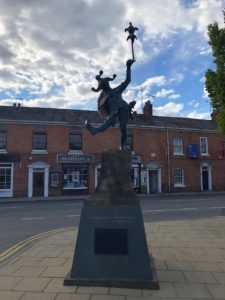
The post Shakespeare: Literature’s Great Mystery appeared first on Mary Angela.
August 12, 2019
Prairie Heart: the Passion of Laura Ingalls Wilder

“But there was something else here that was not anywhere else. It was an enormous stillness that made you feel still. And when you were still, you could feel great stillness coming closer.” This is the description Laura Ingalls Wilder gives as her family crosses Dakota Territory, driving toward Silver Lake in De Smet, South Dakota. Despite Ma and Pa’s conversation, Laura reveals, “[A]ll their talking did not mean anything to the enormous silence of that prairie.”
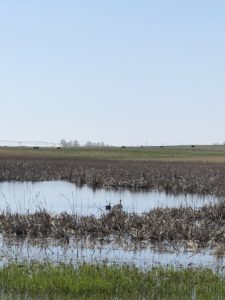 The first chapters of By the Shores of Silver Lake are some of my favorites because of the descriptions. Wilder captures the force of the prairie as few authors can. Although the family had traveled to Independence, KS; Pepin, WI; Walnut Grove, MN; and Burr Oak, IA, before coming to De Smet, Wilder recognizes a difference immediately. It was the difference, I believe, that stayed with her a lifetime. She found the wide-open spaces thrilling, and though Mary and Caroline were afraid and wanted to go back to Plum Creek, she writes, “[Laura] did not want ever to go back.” Wilder would eventually live out her days at Rocky Ridge, in the Ozarks of Missouri, but a piece of her heart would always remain on the prairie.
The first chapters of By the Shores of Silver Lake are some of my favorites because of the descriptions. Wilder captures the force of the prairie as few authors can. Although the family had traveled to Independence, KS; Pepin, WI; Walnut Grove, MN; and Burr Oak, IA, before coming to De Smet, Wilder recognizes a difference immediately. It was the difference, I believe, that stayed with her a lifetime. She found the wide-open spaces thrilling, and though Mary and Caroline were afraid and wanted to go back to Plum Creek, she writes, “[Laura] did not want ever to go back.” Wilder would eventually live out her days at Rocky Ridge, in the Ozarks of Missouri, but a piece of her heart would always remain on the prairie.
 Wilder fans can tour the original Ingalls homestead just outside of De Smet. The house is a replica, built to the specifications of Charles Ingalls’ claim. It gives visitors a good idea of what it felt like to be a pioneer, living on the prairie in the late 1800s. A large corner of the land is a slough (pronounced slew). A slough is marsh-like land that cannot be farmed, at least not well. Charles chose the land because it was close to town, and he thought it would be good for hay, cattle, and a small crop. The cottonwoods that Charles planted are still on the homestead, and if you are lucky enough to go to the gift shop in town, the guide will tie a lovely cottonwood branch from the homestead to the ribbon of your package.
Wilder fans can tour the original Ingalls homestead just outside of De Smet. The house is a replica, built to the specifications of Charles Ingalls’ claim. It gives visitors a good idea of what it felt like to be a pioneer, living on the prairie in the late 1800s. A large corner of the land is a slough (pronounced slew). A slough is marsh-like land that cannot be farmed, at least not well. Charles chose the land because it was close to town, and he thought it would be good for hay, cattle, and a small crop. The cottonwoods that Charles planted are still on the homestead, and if you are lucky enough to go to the gift shop in town, the guide will tie a lovely cottonwood branch from the homestead to the ribbon of your package.
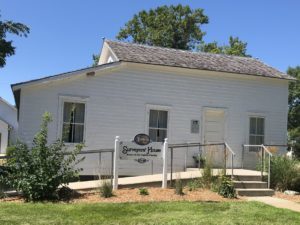
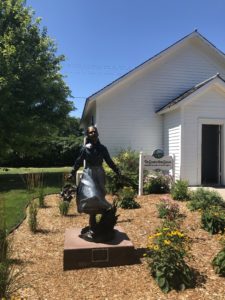 Visitors can also see the Surveyors’ House, which is where Laura and her family lived when they first came to De Smet. The house and the school have been moved to town from their original locations near Silver Lake. Inside the school is a picture of the snow storm of 1880-81, depicted in The Long Winter. Several blizzards hit the town that winter, and the last train made it through on January 4, 1881. By the end of that same month, the town was starving to death—until Almanzo Wilder, Laura’s future husband, and his friend Cap Garland volunteered to travel twelve miles to buy wheat from a farmer.
Visitors can also see the Surveyors’ House, which is where Laura and her family lived when they first came to De Smet. The house and the school have been moved to town from their original locations near Silver Lake. Inside the school is a picture of the snow storm of 1880-81, depicted in The Long Winter. Several blizzards hit the town that winter, and the last train made it through on January 4, 1881. By the end of that same month, the town was starving to death—until Almanzo Wilder, Laura’s future husband, and his friend Cap Garland volunteered to travel twelve miles to buy wheat from a farmer.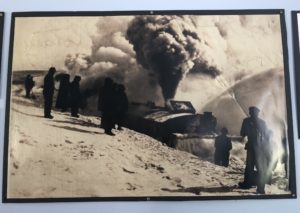
 The house that Pa built in De Smet is at its original location. Laura was married by the time the house was built and never lived here. It’s a mansion compared to the places they lived when she was growing up. The last (and only) time she returned home was when her father passed away. Caroline and Mary would live out the rest of their days in De Smet, Caroline doing laundry and housing renters to pay the bills. Grace lived in nearby Manchester, SD, and Carrie across the state in Keystone, SD.
The house that Pa built in De Smet is at its original location. Laura was married by the time the house was built and never lived here. It’s a mansion compared to the places they lived when she was growing up. The last (and only) time she returned home was when her father passed away. Caroline and Mary would live out the rest of their days in De Smet, Caroline doing laundry and housing renters to pay the bills. Grace lived in nearby Manchester, SD, and Carrie across the state in Keystone, SD.
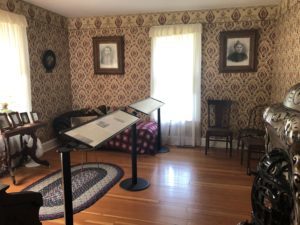 Rediscovering the books as an adult, I better understand the hardships of pioneer life—of Laura’s life. The land was difficult to farm, and pioneers made it worse. Without knowing it, they changed the “climate, the ecology, and the land itself,” adding to the harsh conditions they endured (Fraser). Caroline Fraser, author of Prairie Fires, states every “wheat seed sowed contributed to desiccation.” Combined with bad weather, grasshoppers, and mosquitoes, hardship seems too soft of a word.
Rediscovering the books as an adult, I better understand the hardships of pioneer life—of Laura’s life. The land was difficult to farm, and pioneers made it worse. Without knowing it, they changed the “climate, the ecology, and the land itself,” adding to the harsh conditions they endured (Fraser). Caroline Fraser, author of Prairie Fires, states every “wheat seed sowed contributed to desiccation.” Combined with bad weather, grasshoppers, and mosquitoes, hardship seems too soft of a word.
That doesn’t mean their lives were miserable. Quite the opposite. Wilder’s stories depict the kind of peace and simplicity any modern reader has to appreciate, if not desire at times. But to ignore the brutality of pioneer life on the Great Plains is to disregard the strength of the Ingalls family and the perseverance of Wilder herself, who despite poverty, constant uprooting, a brief education, a devastating fire, and a disabled husband still published one of the most renowned series of all time at the age of sixty-five.
So when you think of Laura Ingalls Wilder, go ahead and think of the bonnets, the baking, the prairie breezes. But don’t forget the imagination, the courage, and the spirit of the woman who dared to share the story of her love for the great, wild wilderness.

June 27, 2019
Greenway: “The Loveliest Place in the World”

If I’m not reading a mystery or romance, I’m reading a biography. I like biographies because they’re a lot like mysteries. Questions—and sometimes secrets—drive the story.
 When it comes to Agatha Christie, I’ve read various accounts. I’ve read her autobiography and two or three biographies. My favorite work is Come, Tell Me How You Live. It’s a memoir about her time with her second husband, Max Mallowan, who was an archeologist. The title is perfect, isn’t it? After all, that’s what I really want to know when I read a biography. How did this person live? At Christie’s house in Devon, I got a closer look.
When it comes to Agatha Christie, I’ve read various accounts. I’ve read her autobiography and two or three biographies. My favorite work is Come, Tell Me How You Live. It’s a memoir about her time with her second husband, Max Mallowan, who was an archeologist. The title is perfect, isn’t it? After all, that’s what I really want to know when I read a biography. How did this person live? At Christie’s house in Devon, I got a closer look.
 Twists, turns, and narrow lanes made the house hard to locate, but the challenge was worth it. Nestled in the hills of Devon, the Greenway house sits high above the River Dart on 39 acres of lush beauty. As I walked up the main drive, I imagined the many walks Christie must have taken on the property, for this was her holiday home. Though she often read manuscripts to family members in the drawing room, or edited them at the boathouse, she did not write at Greenway.
Twists, turns, and narrow lanes made the house hard to locate, but the challenge was worth it. Nestled in the hills of Devon, the Greenway house sits high above the River Dart on 39 acres of lush beauty. As I walked up the main drive, I imagined the many walks Christie must have taken on the property, for this was her holiday home. Though she often read manuscripts to family members in the drawing room, or edited them at the boathouse, she did not write at Greenway.
 But rest is just as vital to creation as the act of creation itself (at least that’s what I told myself. I was on vacation and not writing at all). Greenway was the inspiration for at least three of Christie’s books: Deadman’s Folly, Five Little Pigs, and Ordeal By Innocence. The library may have been the inspiration for the setting of The Body in the Library. Her eclectic book collection is sure to inspire visitors. So is the unique frieze in the room, which charts the 10th Flotilla’s journey from Key West to Greenway. (The War Department requisitioned Greenway for two years during the Second World War. Christie and the family returned in 1945.)
But rest is just as vital to creation as the act of creation itself (at least that’s what I told myself. I was on vacation and not writing at all). Greenway was the inspiration for at least three of Christie’s books: Deadman’s Folly, Five Little Pigs, and Ordeal By Innocence. The library may have been the inspiration for the setting of The Body in the Library. Her eclectic book collection is sure to inspire visitors. So is the unique frieze in the room, which charts the 10th Flotilla’s journey from Key West to Greenway. (The War Department requisitioned Greenway for two years during the Second World War. Christie and the family returned in 1945.)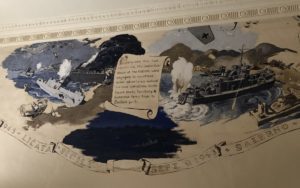

Books were important to Christie and her family (if 5,000 titles are any indication), but so was conversation, which happened over evening meals in the dining room. According to the guide, Christie cooked many family meals herself, using the cookbooks that still line the kitchen cupboards. Great care has been taken by the National Trust to keep things as they were when Christie lived here. Her daughter, Rosalind, insisted upon it. In fact, Christie’s clothes still grace the upstairs bedroom closet. From the Steinway piano (Christie was a trained concert pianist but too shy to play in front of others) to the Damascene chest, the house reflects a home, not a museum. It’s as if the family has stepped out and might return any moment.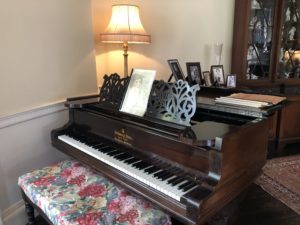
 As I roamed the extensive grounds, it was no surprise to me that Christie called Greenway the “loveliest place in the world.” The walk reminded me of a page I read in the one of the family’s confessional albums. (Confessional albums were popular notebooks, filled by family members and friends, containing likes, dislikes, and current moods.) In it, Christie describes her idea of happiness as “sunshine” and “quietness.” She must have spent many happy days at Greenway, for sunshine and quietness abound here. No wonder she describes her perfect occupation as, “sitting in the sun, doing nothing.” Finding a quiet bench near the Bird Pond, I realized it was becoming mine, too.
As I roamed the extensive grounds, it was no surprise to me that Christie called Greenway the “loveliest place in the world.” The walk reminded me of a page I read in the one of the family’s confessional albums. (Confessional albums were popular notebooks, filled by family members and friends, containing likes, dislikes, and current moods.) In it, Christie describes her idea of happiness as “sunshine” and “quietness.” She must have spent many happy days at Greenway, for sunshine and quietness abound here. No wonder she describes her perfect occupation as, “sitting in the sun, doing nothing.” Finding a quiet bench near the Bird Pond, I realized it was becoming mine, too.

May 8, 2019
Malice Domestic, Chick-fil-A, and Other Mysterious Places
 I learn a lot about myself when I go to conferences. At Malice Domestic, I learned I might be the only person in the United States who hasn’t had Chick-fil-A. I admit, I sort of cringed when my wide-eyed lunch partner asked, “You’ve never had Chick-fil-A?” (which I spelled Chick Fillet until a couple of seconds ago). I had to answer no.
I learn a lot about myself when I go to conferences. At Malice Domestic, I learned I might be the only person in the United States who hasn’t had Chick-fil-A. I admit, I sort of cringed when my wide-eyed lunch partner asked, “You’ve never had Chick-fil-A?” (which I spelled Chick Fillet until a couple of seconds ago). I had to answer no.
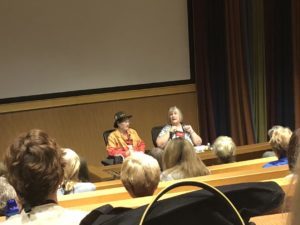
Lucy Zahray, aka The Poison Lady. She gave a “killer” talk.
Which is why it’s important for me to travel. It’s important to learn all the things I don’t know, and going to conferences helps. The first time I took on O’Hare airport, I made a wrong turn and ended up back in the security line. I’ve learned Chicago airport personnel have very little patience for newbies; the only help I got was a finger point in the right direction. But this time? I walked through the underbelly of O’Hare like a boss. Changing terminals wasn’t a problem. I even grabbed a bag of popcorn.

Donna Andrews is the one in purple.
The snack was serendipitous, because I had to sit on the tarmac for two hours, waiting for the weather to clear in Washington, DC. But seeing friends I’d made from previous years at Malice was worth the wait. I got a big hug from Dru Ann Love, one of the nicest book bloggers I know. Last fall, she invited me to tour Salem, MA, with her, and I’ll never forget her kindness. Donna Andrews, who was this year’s Guest of Honor, was also on that trip. Many of you know her as the author of the Meg Langslow mysteries, and I enjoyed hearing her interview. I also enjoyed seeing blogger Christine Gentes of Map Your Mystery, who first put South Dakota on her reading map with a review of my Prof. Prather series.
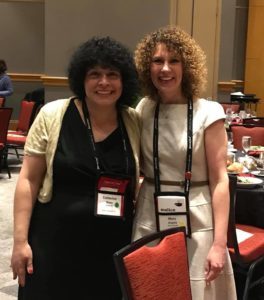
Saturday night, I hosted a banquet table with fellow cozy mystery author Catherine Bruns. It was a new experience that allowed me to talk with readers. During the conference, I was able get reacquainted with several readers I chat with online. (Special thanks to Shirley Landes and Nicole Vickers for reaching out!)
Sunday morning, I had my panel Book-Loving Sleuths. I love books, Em Prather loves books, and everyone at the conference loves books, so the discussion was just as bookish as you’d expect. One of the panel members had a nice aside about the Oxford comma, bless her heart. It’s incredible to be around people who revere books as much as you do, and for that reason alone, I think conferences are worth it.
Learning what you don’t know is also worth it. While I had an opportunity to try Chick-fil-A and passed (gasp!), it’s important to get out of my comfort zone once in a while. Traveling by myself and listening to panels gives me a nudge. So does learning about places like Chick-fil-A.
Though I don’t think it could hold a candle to Al’s Oasis.
March 15, 2019
In Celebration of the Irish

Grandpa and Grandma with Grandma’s favorite tea cup and her Hot Milk Sponge Cake
 So many stories surround the Irish: luck, gold, rainbows. My grandma was Irish, and for years, her story has fascinated me. As a young woman, she went to the University of South Dakota. It was rare for a woman from a farming family to attend college in the early twentieth century, yet she received her teaching certificate and taught in Salem, SD. Besides being a teacher, she was a mother and an avid journal writer. Unfortunately, when she died, her journals were discarded. I wish I had those journals now. I have many of her pictures, which tell their own tales. She labeled them, commented on them, and glued them to comic strips like Flapper Fanny. My memories of her are like that: random, incomplete, surprising.
So many stories surround the Irish: luck, gold, rainbows. My grandma was Irish, and for years, her story has fascinated me. As a young woman, she went to the University of South Dakota. It was rare for a woman from a farming family to attend college in the early twentieth century, yet she received her teaching certificate and taught in Salem, SD. Besides being a teacher, she was a mother and an avid journal writer. Unfortunately, when she died, her journals were discarded. I wish I had those journals now. I have many of her pictures, which tell their own tales. She labeled them, commented on them, and glued them to comic strips like Flapper Fanny. My memories of her are like that: random, incomplete, surprising.
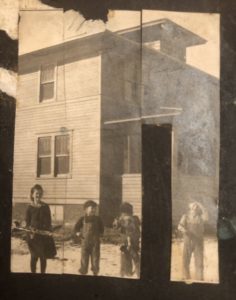
It was easy for Grandma to “cut” people out of her life–or at least her pictures!
She wasn’t a conventional grandma. I never ate cookies at her house. I watched Perry Mason, though, and ordered as much ice cream as I wanted from the delivery man. Her husband died young (long before I had a chance to meet him), and she was widowed longer than she was married. She and her two sisters were fond of playing cards and drinking beer. Hell-raising never interfered with Sunday Mass, however, and Grandma always had a spare dollar to give or candle to light for someone who was in need. The family worried about her house burning down because of her love affair with candles, papers, and books. When she passed away, my dad and his three brothers split up her book collection. When my dad died, my sister and I split up his collection. That tells you how much she read.
My dad told lots of stories about my grandma, but one of my favorites was the story of Grandpa publishing a notice in the newspaper. Grandpa stated, very pragmatically, that he would not be responsible for Grandma’s debts. They were in an argument at the time, and he did not want to be liable for her bills. When I remember the story, I smile because it matches what I knew about her. She ordered lots of magazines and books. I have a treasure trove of Time Life books from her collection, and her house had to be sold before her Fingerhut bill could be paid.

Grandma’s original recipe for Hot Milk Sponge Cake
But it’s the kind of funny, surprising tidbit I’ve come to expect from her story, and I think that’s why I like it so much. Whenever I look at old pictures or peruse online newspaper databases, I find something surprising—a fact that doesn’t fit or shouldn’t be there. In some ways, her life is a great mystery to me. Recently, for instance, my sister shared Grandma’s recipe for Hot Milk Sponge Cake. The name alone is intriguing. More intriguing is the thought of grandma baking. (I remember her overcooking noodles once!) But I was able to replicate the cake and thought I’d share the recipe with you for St. Patrick’s Day. Even if you’re not Irish (according to a DNA test, I’m 18%), I hope you enjoy this easy recipe from my Irish grandma!
Hot Milk Sponge Cake
Ingredients:
4 eggs 1 tsp. salt
2 c. sugar 2 tsp. vanilla
2 c. sifted flour 2 tsp. baking soda
2 tbsp. butter 1 c. milk (2% or whole)
Directions:
1. Preheat oven to 350. Grease and flour pan. (I used a Bundt pan.)
2. Beat eggs. Gradually add sugar, beating until fluffy and light colored.
3. Combine flour, baking powder, salt. Add to egg/sugar mixture.
4. Add vanilla.
5. Heat milk and butter to almost boiling. Stir quickly into batter.
6. Bake 25-30 minutes, or until cake springs back.
If desired, ice or serve with fresh fruit.
February 6, 2019
Beating on: the Heart of the Love Story of F. Scott and Zelda Fitzgerald
 This month, I’m revisiting one of my favorite collections Dear Scott, Dearest Zelda: The Love Letters of F. Scott & Zelda Fitzgerald edited by Jackson R. Bryer and Cathy W. Barks. It’s impossible to summarize the breadth of this excellent compilation, and I wouldn’t hesitate to recommend it to fans of letters or the Fitzgeralds. Here, I’ve included moments that have inspired, challenged, and redefined my definition of a love story. I hope they inspire yours too.
This month, I’m revisiting one of my favorite collections Dear Scott, Dearest Zelda: The Love Letters of F. Scott & Zelda Fitzgerald edited by Jackson R. Bryer and Cathy W. Barks. It’s impossible to summarize the breadth of this excellent compilation, and I wouldn’t hesitate to recommend it to fans of letters or the Fitzgeralds. Here, I’ve included moments that have inspired, challenged, and redefined my definition of a love story. I hope they inspire yours too.
The letters begin in 1918, when Zelda was a daring southern belle and Scott a lieutenant stationed nearby in Montgomery, Alabama. Scott tells a friend, “I fell in love with her courage, her sincerity, and her flaming self-respect” (p. 8). Many people know of Zelda’s physical courage—jumping into fountains, dancing on tables, diving off cliffs—but fewer know of her emotional courage, and that’s what readers get glimpses of in her letters. During their early courtship, Zelda tells Scott, “I’m not afraid of anything. To be afraid a person must be a coward or very great and big. I am neither” (p. 43).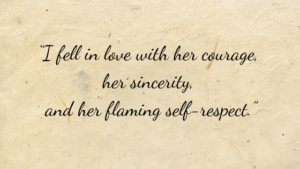
But her courage would be tested the first ten years of marriage, the decade dubbed the Jazz Age for its music, drinking, and gaiety. Scott was an alcoholic, and the parties went on for days. He was also a successful writer who’d gained fame with his first novel This Side of Paradise in 1920. Although Zelda wrote and painted, she didn’t think of herself as an artist. In her younger years, she’d danced ballet, so she returned to it in 1925, despite being a mother now and twenty five years old.
After studying relentlessly and being offered a solo role in Aida at a professional dance company, Zelda suffered a major breakdown. She had hallucinations (“vaporous places peopled with one-dimensional figures and tremulous buildings” p. 83), and when she tried to drive off a cliff, Scott had her institutionalized. In the early letters from the facility, she struggles with the treatment and begs for her old life back. In September of 1930, she writes, “Please help me. Every day more of me dies with this beating I’m taking” (p. 90, emphasis Zelda’s). Many letters vacillate between blaming Scott and worshipping him, the mental illness blurring the reality of her condition.
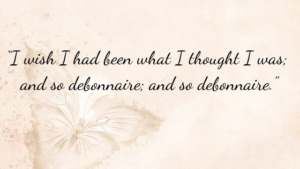 Though Zelda would get better, life as they knew would change. She would be in and out of institutions the rest of her life; however, she would continue to paint, write, and take classes. In 1936, Zelda wrote, “I wish I had been what I thought I was; and so debonnaire; and so debonnaire” (p. 222, spelling original).
Though Zelda would get better, life as they knew would change. She would be in and out of institutions the rest of her life; however, she would continue to paint, write, and take classes. In 1936, Zelda wrote, “I wish I had been what I thought I was; and so debonnaire; and so debonnaire” (p. 222, spelling original).
I imagine Scott wished that too, for he was as reliant on Zelda as she was on him. She was the flapper girl of his books, his muse. “If I have failed you is it just barely possible that you have failed me,” he writes in 1930 (p. 89). But he never blamed her: “We ruined ourselves. I’ve never honestly thought we ruined each other” (p. 65).
For the couple, there would be “no second acts,” a line often accredited to Scott without much understanding. Fitzgerald indeed believed in second acts, as he would reinvent himself again and again throughout the years. In one of her letters, Zelda writes, “You have always had so much sympathy for people forced to start over late in life that I should think you could find the generosity to help me” (p. 80). While Zelda battled mental illness, Scott battled ongoing money troubles. He moved to Hollywood (where he met Shelia Graham) to write for the big screen. Screenwriting didn’t pay off, and he began work on his final novel, The Last Tycoon. He would never finish it.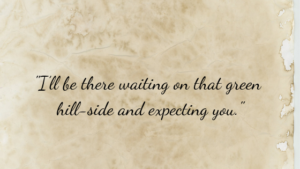
The last time Scott and Zelda saw each other was on a trip to Cuba in 1939. The vacation was a dismal failure. Scott had to be hospitalized for alcoholism when they returned to New York. Zelda was worried and wrote him two letters before ever leaving the city. These letters show the depth of their connection, despite their tumultuous and often separate lives, and even hope for the future. Zelda writes, “There are lots of happy places: it says so in the time tables, and before long we’ll surely find one. […] Meantime: You know I’ll be there waiting on that green hill-side and expecting you” (pp. 282-283). Scott replies, “You are the finest, loveliest, tenderest, most beautiful person I have ever known, but even that is an understatement because the length you went to there at the end would have tried anyone beyond endurance” (p. 283).
Scott died December 21, 1940, of a heart attack. His last letter to Zelda was dated December 19. Zelda would continue to live between her mother’s house in Montgomery, Alabama, and Highland Hospital. On March 10, 1948, she died in a fire at Highland Hospital. They were rejoined in burial, Scott’s famous quote from The Great Gatsby marking their headstone: “So we beat on, boats against the current, borne back ceaselessly into the past.”
Beating on, like a heart—that was the Fitzgeralds. They didn’t have a perfect marriage or even a happy one. But they had passion for life, hope for the future, and love for one another. And sometimes that’s enough for a great love story.
January 8, 2019
Gitchie Girl Uncovered: An Interview
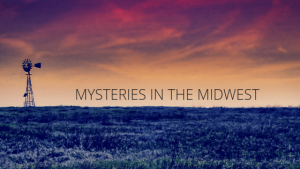 On November 17, 1973, five teenagers went to Gitchie Manitou State Park, which is located on the South Dakota/Iowa border. Ranging in ages 13-18, they were looking forward to a night of conversation, music, and fun. Three men with guns soon appeared, posing as police officers. But they weren’t the police. They were brothers, and in fact, one was on work release from prison. Without motive, the Fryer brothers killed four of the five teenagers. Sandra Cheskey, just 13 years old, was the lone survivor of the mass murder that shook the heartland.
On November 17, 1973, five teenagers went to Gitchie Manitou State Park, which is located on the South Dakota/Iowa border. Ranging in ages 13-18, they were looking forward to a night of conversation, music, and fun. Three men with guns soon appeared, posing as police officers. But they weren’t the police. They were brothers, and in fact, one was on work release from prison. Without motive, the Fryer brothers killed four of the five teenagers. Sandra Cheskey, just 13 years old, was the lone survivor of the mass murder that shook the heartland.
Sandra never spoke about the murders or that horrific night. Rumors, untruths, and skepticism followed, but she shut them out, convincing herself she’d moved on. It wasn’t until years later, after reading Phil Hamman’s memoir, Under the Influence, that she wondered if she should share her story to help other rape victims and trauma survivors. Sandra knew Phil and trusted him since he was good friends with one of the victims. In 2016, Gitchie Girl, a nickname Sandra was given after the crime, was published, and deep recovery began as she told her story on paper and in person. The authors, Phil and Sandy Hamman, focused on Sandra’s Cheskey’s account, which made it a very different true crime novel. Today the authors have agreed to talk about the second book, Gitchie Girl Uncovered, which releases today. Please welcome Phil and Sandy Hamman!
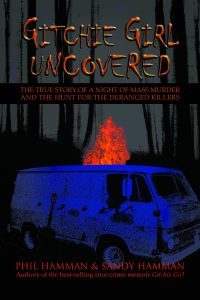
What made you decide to pursue a second book about the Gitchie Manitou murders? Did you plan on writing a sequel from the beginning?
We had no plans for a second book at the beginning. Our original purpose was to tell Sandra Cheskey’s story. We vastly underestimated how many people would be drawn to Sandra’s story and thought it would appeal to local folks who remembered or heard about the crimes. As we started going to book events, we kept getting many of the same questions that weren’t answered in the first book. We hadn’t planned on writing a sequel, but the interest in the story led to the second book.
What’s the difference between Gitchie Girl and Gitchie Girl Uncovered? Should readers read book one before reading book two?
Gitchie Girl tells about the mass murders but focuses on Sandra Cheskey’s life. Gitchie Girl Uncovered gives readers a closer look at the killers and their backgrounds. It also reveals some strange twists and bizarre discoveries made by the investigative team. We wrote the second book so that it can be read independently of the first book. We recap the murders in the second book and then go down a different path.
Gitchie Girl Uncovered will include more information about the Fryer brothers and the investigation. Did that information make the book harder to write than book one?
Yes. It was harder because the information came from several people we interviewed as well as a variety of legal documents, investigative reports, and court transcripts. There are thousands of pages of documents, and we had to read through a lot to get to the most interesting information. In the first book, we primarily relied on Sandra’s life story and interviews with her.
How did you research Gitchie Girl Uncovered? Did any information surprise you?
In addition to all of the documents we mentioned, we were surprised when we went to the Dickinson County Courthouse to research the trials. This is where the second murder trial was held, and all of the physical evidence was moved to the evidence locker at the courthouse. It was mind boggling to walk through row after row of evidence from so many different trials. When we got to the Gitchie Manitou shelf, there was quite a bit of physical evidence which we outline in the second book. It was an emotional experience for Phil when he found his best friend’s eyeglasses in an evidence bag. The glasses were found on the ground where the executions took place.
We also spent a full day as well as many phone conversations with five Bureau of Criminal Investigation agents who worked the case. Their stories brought the book to life. There were many other people associated with the crimes who shared their stories including the person who delivered Sandra (she was born in the backseat of a car), one of the ambulance drivers, a counselor, and parole officer.
Sandra Cheskey, the lone survivor of the Gitchie Manitou murders, was a major focus in book one. Will her story continue in book two?
We talk about Sandra throughout the second book as well and tell more about her life struggles. She experiences anxiety to this day that she traces back to the traumatic events.
You write true crime novels. What draws you to the genre, and what are you working on now?
It seems that we fell into writing true crime since Phil knew the lone survivor, Sandra, and the boys who were murdered. Once we found some success in this genre, we stayed in the groove. True crime is becoming more popular, and the stories are of interest to us as well.
Both of you are teachers. Does writing influence your teaching or teaching influence your writing? How?
I think this applies to Phil more than me since he works with high school students every day to help improve their writing. He shares how to continually improve and polish a writing piece, for example, by using stronger descriptive words. He shares his drafts with the students and demonstrates how he rewrites a piece multiple times. Then they are able to read the first draft of a chapter compared to the final as well as the writing skills involved in doing so.
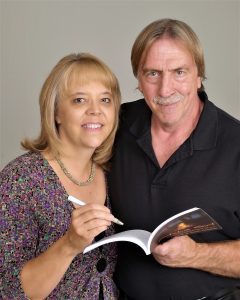
Phil and Sandy Hamman
Do you have any book signings or presentations planned for the area? Where might readers find upcoming events?
We have many events planned starting in late January. The first will be at Barnes & Noble in Sioux Falls on January 26, 2019 at 10:00 AM. I have included a link to our Facebook author’s page which is where we will post the other events. http://bit.ly/29MtujI
Thank you Phil and Sandy Hamman for the interview. See you at Barnes and Noble!
Website: http://www.philhammanauthor.com
Purchase the book on Amazon or Barnes and Noble
Would you like to read my previous interview with the authors? Click here.
December 17, 2018
Well, it’s time for a blog about Christmas letters. Ha!

Do you like Christmas letters? I do. But I know a lot of people don’t. They see them as permission slips to brag about … well, everything. Family, jobs, pets, vacations—if something great happened, chances are it will be covered in the Christmas letter. The past couple years, I’ve seen fewer Christmas letters, and some say it’s due to social media. Because people share so much about their lives online, they don’t send letters. Now that I’m online, I realize it’s true. Keeping in touch is easier than ever before. But that doesn’t mean Christmas letters are any less fun to receive.
Ironically, the first Christmas cards were sent to avoid writing letters. In Europe, a man looked at his growing stack of correspondence and decided to create a generic response he could send to everyone. Not responding wasn’t an option; good manners required a reply. Thus the first Christmas card was born, appearing in the 1840s with the general greeting, “A Merry Christmas and A Happy New Year To You.” Christmas cards made it to the U.S. 35 years later, in 1875.
When did people start writing letters to accompany their holiday cards? I’m not sure, but I do know that The Atlantic was already poking fun of Christmas letters in 1954. According to the hilarious article “From Us to You,” every good Christmas letter starts with “well” as in “Well, it’s Christmas time again.” It also has lots of exclamation points and the word “Ha!” spread liberally throughout.
All jokes aside, I think a good Christmas letter is personal, revealing a fun detail or story about the writer or the family. It’s also written in a font that readers can see without a magnifying glass. Letter writers could take a cue from my students, who are famous for increasing the font size to meet page requirements. Most of all, Christmas letters should be fun, not a chore. If you don’t know where to begin, take a suggestion from Garrison Keillor, who said to begin a letter with the present moment: “I’m at ballet with my daughter, and the Waltz of the Snowflakes is blaring from the speakers in the studio … for the third week in a row.”
Keillor also said, “We shy persons need to write a letter now and then, or else we’ll dry up and blow away.” Even though Keillor was talking about personal letters, I think the same could be said for Christmas letters. They might be the only letters being written today—or at least the longest form of communication beyond a text or email. It’s good to share. So get out that stationery, and jot down a few lines. Someone might be waiting for a Christmas card or letter right now, and a hello will make all the difference in their holiday season.



